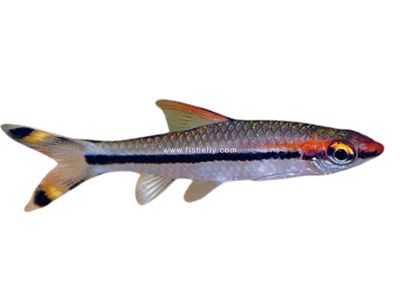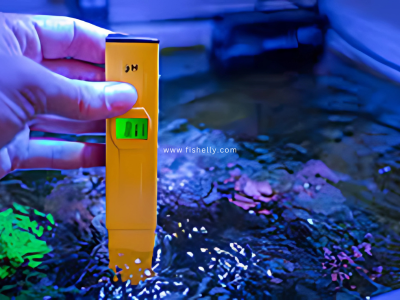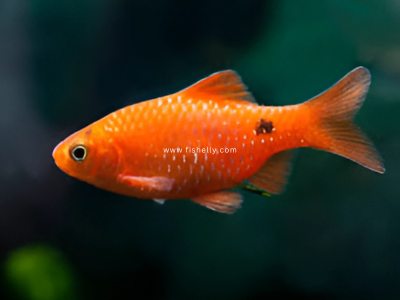Barb Fish Care Guide: Species, Diet, Breeding & Setup Tips
Learn how to care for barb fish with tips on species, diet, breeding, water temperature, and tank setup to keep them healthy and thriving in your aquarium.
Table of Contents
- Native Habitat
- Species and Distribution
- How Long They Live
- Breeding of Barb Fish
- Group Behavior of Barb Fish
- Diet and Feeding Habits of Barb Fish
- Ideal Water Temperature and Tank Setup of Barb Fish
- Differences Between Males and Females of Barb Fish
- What to Do and What Not to Do for Barb Fish
- Fun Facts About Barb Fish
- Faq
- Conclusion
Barb fish are popular for their vibrant colors, active personalities, and ability to thrive in different types of freshwater aquariums. Barb fish are part of the Cyprinidae family and a favorite among hobbyists around the globe. Barbs are an ideal addition to community tanks, injecting life and energy into any aquatic setup with their playful attitudes and impressive looks. The barb fish is reputed for active schooling behavior and tough character, and in addition to being visually stunning, it also provides a fascinating insight into the colorful realm of freshwater fish.

Native Habitat
Barb fish are indigenous to freshwater habitats in Asia, Africa, and the Middle East. Fish like the Tiger Barb (Puntius tetrazona) are popular from Southeast Asia, where they inhabit rivers and streams from places like Thailand and Malaysia. They usually inhabit fast-flowing waters with dense vegetation, rocks, and debris, which offer them food and hiding places. They adapt well to tropical waters with crystal-clear, well-oxygenated water.

Species and Distribution
There are more than 200 various species of barb fish, among which are such popular ones as the Cherry Barb, Rosy Barb, and the already mentioned Tiger Barb. They differ significantly in size, color, and disposition. They are found widely distributed, with some species living in Asian rivers and lakes, while others are spread throughout Africa. Because of their ability to adapt, barbs can thrive in a wide range of conditions, from slightly acidic to alkaline water, which makes them a desirable option for aquarium enthusiasts.
How Long They Live
Barb fish can live for 5–7 years with proper care, and some species are even able to live longer. These fish live long because they are robust and can tolerate various water conditions. But to help them achieve their maximum lifespan, keeping them healthy and in a stable environment is the key.
Breeding of Barb Fish
Barb fish are egg-layers, and breeding behavior may be different in different species. In the wild, they breed during seasonal floods when water rises to enable them to lay eggs amidst vegetation and debris. In captivity, they tend to need a separate breeding tank with soft water and plenty of vegetation to act as cover for the eggs. Males tend to chase females during breeding, showing off their best colors in order to attract a mate. Once they spawn, the adults are usually taken away to avoid them consuming the eggs.
Group Behavior of Barb Fish
Barb fish are social by nature and do well in groups. They tend to be more active and show better colors when maintained in schools of at least 5–6 fish. They swim together in close schools for safety and social reasons. Barb fish are peaceful but may sometimes show nipping behavior, especially when maintained in small groups or in a lack of space.

Diet and Feeding Habits of Barb Fish
Barb fish are opportunistic feeders and omnivores, which means they eat both plant and animal foods. In captivity, a well-balanced diet is necessary to maintain their health. The following is a description of their feeding habits:
• Favourite foods: Barb fish prefer a host of foods including smaller fish, insects, worms, and plants such as algae and vegetable content. They have also been noted to love the use of live or frozen feeds such as bloodworms, brine shrimp, and daphnia.

• Flakes and Pellets: Although barbs will gladly consume flakes and pellets, these must be supplemented with frozen or fresh foods so that they get all the nutrients. A good-quality flake food can be used as part of their daily diet.

• Feeding Frequency: Younger barbs need to be fed 2-3 times a day, whereas adults can be fed once or twice a day. A varied diet is essential to keep them healthy and their colors vibrant.
Ideal Water Temperature and Tank Setup of Barb Fish
Water Temperature: Barb fish like water temperatures ranging from 72°F to 80°F (22°C - 27°C), which makes them perfect for tropical freshwater aquariums.

Water Quality: The water must be clean and well-oxygenated to ensure the fish remains healthy.

Filtration System: Employ a filtration system that supplies sufficient flow to ensure water quality and oxygen levels.

A moderate current must be provided to simulate their natural environment where water movement is not high.
Tank Setup: Add lots of plants, rocks, and hiding places to provide barbs places to explore and hide, thereby creating a stress-free environment.

Differences Between Males and Females of Barb Fish
Male:
• Brighter and more colorful, with clearer markings.
• Shows the brightest colors when it is breeding season so that it can attract mates.

Female:
• Larger in size compared to males, particularly when it carries eggs.
• Has a more rounded body form, especially when gravid (pregnant with eggs).

What to Do and What Not to Do for Barb Fish
What to Do Keep with peaceful species: • House barb fish in a community tank with other peaceful species to avoid aggression.
Maintain proper water quality: • Do regular water changes to have clean and healthy water.
Check water pH: • Have a slightly acidic to neutral pH level for maximum health, since barbs love these conditions.
What Not to Do Avoid overcrowding • Do not overstock the tank, because this may result in stress and aggression between the fish.
Avoid slow-moving long-finned fish • Do not house barbs with slow-moving long-finned fish, as barbs are nippy towards them.
Fun Facts About Barb Fish
• Barb fish are very active and love to swim around the tank and investigate every nook and cranny.
• Some of them, such as the Tiger Barb, are infamous for fin-nipping, but they will normally only do so in schools, so it is less of an issue in a well-maintained community tank.
• Although small, barb fish are highly intelligent and curious, and they tend to recognize their owners and respond to feeding times.

Faq
1. What are barb fish?
Colorful, active freshwater fish, great for aquariums.
2. Where are they from?
Asia, Africa, and the Middle East.
3. How many types are there?
Over 200 species (e.g., Tiger, Cherry, Rosy Barbs).
4. How long do they live?
5–7 years with proper care.
5. Are they beginner-friendly?
Yes, they’re hardy and easy to care for.
6. Should they be kept in groups?
Yes, at least 5–6 together.
7. Can they live with other fish?
Yes, but avoid slow or long-finned fish.
8. What do they eat?
Flakes, pellets, live/frozen food, plants.
9. How often to feed?
Young: 2–3 times/day; Adults: 1–2 times/day.
10. Tank setup?
Plants, rocks, hiding spots, gentle water flow.
11. Best water temp?
72°F–80°F (22°C–27°C).
12. Can they breed in tanks?
Yes, in a separate breeding tank with plants.
13. Male vs Female?
Males = brighter; Females = rounder, larger.
14. Do they recognize people?
Yes, they respond to their owners.
15. What to avoid?
Overcrowding, dirty water, and slow fish.
Conclusion
Barb fish are excellent for beginners as well as experienced aquarists, with a reputation for bright colors, lively nature, and tolerance. With more than 200 species, they bring beauty and dynamism to the aquarium. By providing the right care—such as proper water temperature, a balanced diet, and ample space to swim in groups—you can ensure they live a long, healthy life. Avoid common mistakes like overcrowding and poor water quality, and your barbs will thrive, bringing endless enjoyment to your aquarium.
Got questions or tips? Drop them in the comments!






